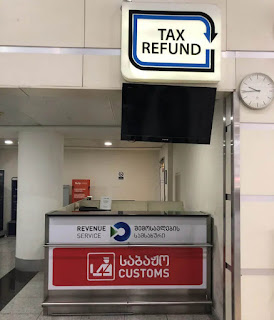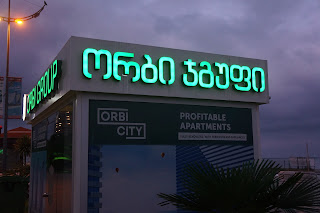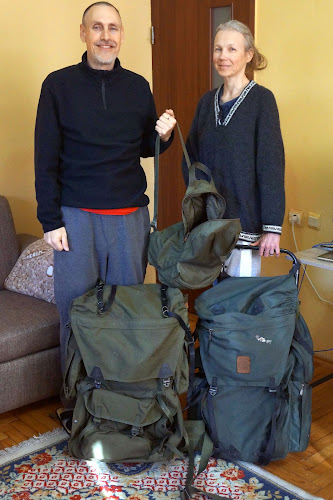Travelling in Cape Town, South Arica
Visiting Cape Town and travelling around Winelands, Cape peninsula and Cape of Good Hope in South Africa.
We spent a few weeks in South Africa. Originally the idea was to stay there longer but we soon found out that this was not the place we were looking for. Anyway, we enjoyed our stay fully, especially the possibility to communicate in English and to be fully understood.
The two major problems which changed our minds about this otherwise great country were unsafe and attitude toward women. Päivi could not walk alone after dark and even during daytime it was a bit uncomfortable.
The local way of life differs considerably from European and South American. People are all the time aware and expecting the worse. There are stories about gangs taking over farms and houses, people getting killed for a car or a small amount of money, women being raped. Middle-class people hide behind barred windows and pay for protection to armed response services. Shops keep their doors closed even in broad daylight and shopkeepers reserve themselves a right to select their customers. In most cases this means that no black people are allowed to enter.
There is no respect for women. This is seen most clearly in the fact that nearly half of the female population has been raped. The problem is even more serious considering the HIV problem of the country. There are more HIV positives in South Africa than in any other country in the world. Approximately one third of the population is infected. Newspapers are full of death announcements of young people who have passed away either “peacefully” or “tragically“”. The median life expectancy is 27. Just figure it out.
Most South-Africans are racists and they do not hesitate to state it publicly. Those who claim not to be racists always add a “but” afterwards. No wonder, because most crimes are committed by black or coloured people who live in shanty towns. It is easy for us Europeans to say all races should be equal when we don't have to face any of these problems.
The racial variety of South-Africa is huge, much more than just whites and blacks. In the black side there are black Africans and coloured people including for example Malay Muslims and Mulattos. Even whites do not constitute a single group but are separated to Afrikaans white and English white people who don't have much in common. Both are a clear minority who are bound to be overrun by black and coloured people in the near future.
We stayed most of the time in Cape Town in a community-like hostel. There were six South-African residents, both coloured and white, who were living in the hostel permanently. Others were travellers staying from one night to several months. The atmosphere was liberal and pot was smoked openly. We had a good time together and we learned a lot about South-Africa - a lot more than visiting all kinds of tourist attractions.
The hostel had a roof-top terrace for barbecue (braai in Afrikaans) with a great view of the famous Table Mountain. We did barbecue last time in Kauniainen so it was nice to do it again. We bought kilos of chicken, beef, ribs, lamb, and pork. The South African red wine is by default very sweet so in the beginning we had a hard time finding anything suiting to our dry taste. We also visited Winelands in Stellenbosch for wine tasting and found out that the more expensive wine it was, the more sour and undrinkable it got. The worst was Pinotage, which was supposed to be the best. Santeri almost threw out that stuff.
We drove around Cape Town area after renting a car for three days. In Cape peninsula, namely Cape of Good Hope, we went to a couple of natural parks to see penguins, baboons, and lots of beautiful green bushes. There were supposed to be some zebras and other animals as well, but unfortunately it is always either bad weather or wrong time of the year to spot any. We saw a couple of zebras only after getting out of the natural park in some farmyard.
In fact, natural parks do not differ significantly from zoos in Europe. Animals are stuffed in a small place so that tourists could see as many different species as possible in a short time for money. Quite an abuse of animal rights for earning money. We also discovered that natural parks mean the same thing for South Africans as beaches for Brazilians and lively night life for Argentinians: they are national pride, used for luring and ripping off tourists, and are not so special in reality.
We are now happily back in Buenos Aires, our new home town. Still there will always be seven things we are going to miss in Cape Town: 1) Our great hippie community, 2) English language, 3) rooftop barbecue with Table Mountain view, 4) hot chili sauce called peri-peri, 5) bottomless cups of coffee, 6) affordable single-malt whiskies and 7) drinkable and good-tasting tap water. Price level was about half cheaper than in Finland and two times more expensive than Buenos Aires. All in all, we are happy we went there but do not miss back.
Keywords: Cape Town, South Africa, HIV, rape, racist, Malay Muslim, Mulatto, braai, Afrikaans, Winelands, Stellenbosch, Pinotage, Cape of Good Hope, Cape peninsula, animal abuse, Table Mountain.







Comments